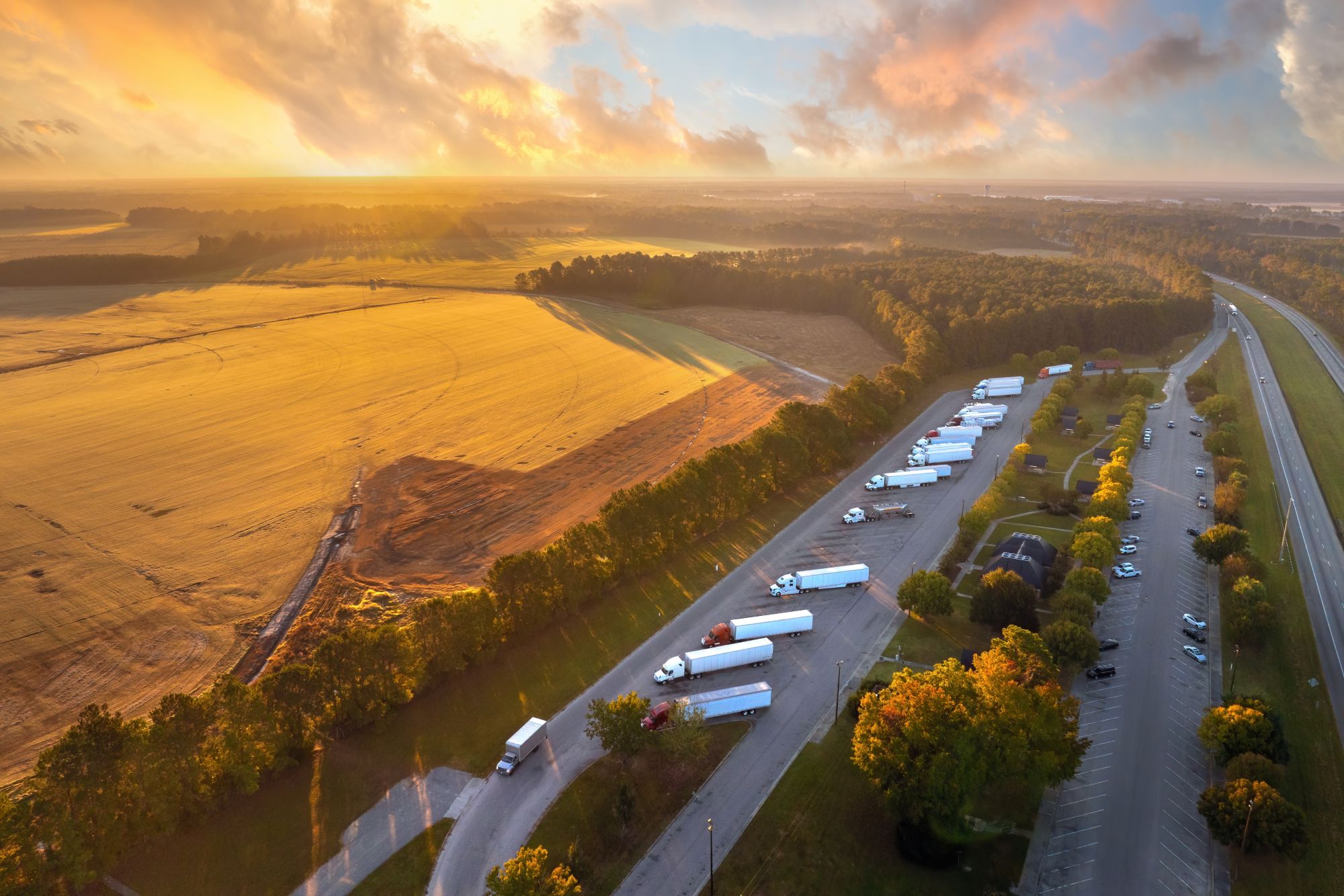
Guest
Hogyan válhatsz teherautó-vezetővé
Létrehozva: 26. 09. 2025
•
Frissítve: 26. 09. 2025
Európa-szerte soha nem volt még ilyen nagy a kereslet a hivatásos tehergépkocsivezetők iránt. Az Egyesült Királyságban a Közúti Fuvarozók Szövetségének becslése szerint 200 000 új tehergépkocsivezetőre lesz szükség a következő öt évben az ellátási láncok működéséhez. A helyzet Európa nagy részén hasonló. Az International Road Transport Union adatai szerint 2024-ben 426 000 betöltetlen járművezetői állás lesz Európa-szerte.
Ez azonban lehetőséget teremt. Amint azt [korábban már feltártuk] (https://snapacc.com/newsroom/is-logistics-a-new-alternative-to-further-education-for-school-leavers/), a szállítmányozási ágazat állandó munkát kínál az egyetem helyett alternatívát kereső iskolaköteleseknek és az átképzést kereső felnőtteknek. A tehergépkocsi-vezetői pálya egy biztos jövedelemhez és egy strukturált karrierhez vezető út.
Sokan felteszik a kérdést: hogyan lehet tehergépkocsivezetővé válni? A válasz nem csak a képzéstől és a jogosítványoktól függ, hanem attól is, hogy megértsük, mit jelent belépni egy olyan szakmába, amely Európa gazdaságát mozgásban tartja.
Ki lehet tehergépkocsivezető?
A járművezetői pálya egyik fő vonzereje a hozzáférhetőség. A pályakezdéshez nincs szükség egyetemi diplomára vagy többéves szakirányú képzésre; a szakmai képesítés megszerzése előtt csupán egy normál (B kategóriás) személygépkocsi-vezetői engedélyre van szükség.
A képzés alsó korhatára mind az Egyesült Királyságban, mind az EU-ban 18 év, ami azt jelenti, hogy az iskolából kikerülők a személygépkocsi-vezetői engedélyről közvetlenül a hivatásos tehergépkocsi-vezetői képzésre léphetnek át. Ennek ellenére sok cég előnyben részesíti, ha a nemzetközi járművezetők legalább 21 évesek, tekintettel a távolsági fuvarozással járó extra felelősségre.
Az orvosi alkalmasság is fontos. Minden kérelmezőnek át kell esnie egy orvosi vizsgálaton, mielőtt tehergépjármű-engedélyt kaphat. Az Egyesült Királyságban ez egy sor vizsgálatot foglal magában, [többek között] (https://www.hgvt.co.uk/hgv-medical/) látásvizsgálatot, vérnyomásmérést és olyan betegségek szűrését, mint az epilepszia, szívbetegség vagy alvási apnoe.
Az európai nemzetek ugyanazokat az uniós szintű egészségügyi előírásokat alkalmazzák, és a rendszeres megújítások biztosítják, hogy a járművezetők egész pályafutásuk során egészségesek maradjanak.
Mennyit keres egy kamionsofőr?
Sokak számára, akik a hivatásos gépjárművezetést fontolgatják, az egyik legfontosabb kérdés: mennyit keresnek a tehergépkocsivezetők?
A válasz helytől, tapasztalattól és a végzett munka típusától függően változik, de Európa-szerte a szakma versenyképes fizetést kínál más belépőszintű állásokhoz képest.
● Egy új járművezető az Egyesült Királyságban általában évi 27 000 font körüli összegből indul. Azok, akik hosszú távú fuvarozásban dolgoznak, különösen nemzetközi útvonalakon, 45 000 font felé emelkedhet a fizetésük - néha még ennél is többet, ha speciális vagy veszélyes rakományokat szállítanak. azok, akik speciális rakományokat, veszélyes árukat szállítanak, vagy határokon átnyúló tevékenységet végeznek.
● [Spanyolországban] (https://www.salaryexpert.com/salary/job/truck-driver/spain) a fizetések általában alacsonyabbak, mint az Egyesült Királyságban, jellemzően 36 600 euró körül vannak, bár a nagyvárosokban működő nagy logisztikai cégek ennél többet is kínálhatnak.
● Lengyelország az elmúlt években nagy keresletet tapasztalt a járművezetők iránt, de a bérek továbbra is szerények, átlagosan 92 400 PLN (kb. 21 690 EUR) körül mozognak.
● Románia a skála alsó végén helyezkedik el, a sofőrök általában 80 550 RON-t (16 000 euró) keresnek, bár a nemzetközi fuvarozási szerződések jelentősen megnövelhetik az otthoni fizetést.
Természetesen a fizetés nem a teljes történet. Sok vállalat túlórapénzt, étkezési hozzájárulást vagy bónuszokat kínál a szállítási célok eléréséért. És mivel a sofőrök iránti kereslet nem mutatja a lassulás jeleit, ez a munka olyan szintű biztonságot is nyújt, amelyet kevés más belépő szintű pálya tud felmutatni.
Milyen tehergépkocsi-vezetői engedélyre van szükségem?
Mielőtt teherautó volánja mögé ülhetne, szüksége van a megfelelő jogosítványra. Az Egyesült Királyságban ez azt jelenti, hogy a szokásos személygépkocsi-jogosítványon túlmenően a hivatalosan nagy tehergépjármű- (LGV) vagy nehéz tehergépjármű- (HGV) jogosítványt kell megszereznie. A kifejezéseket gyakran felváltva használják, de mindkettő ugyanazt a hivatásos vezetési kategóriát takarja.
Vannak, akik C1 kategóriás jogosítvánnyal kezdenek, amely a 3,5 és 7,5 tonna közötti közepes méretű járművekre vonatkozik - gyakran kisebb teherautókra használják.
A legtöbb feltörekvő tehergépkocsivezető azonban egyenesen a C kategóriás, más néven 2. osztályú tehergépkocsi-szakszolgálati engedélyt szerzi meg. Ez lehetővé teszi a 7,5 tonna feletti merev járművek vezetését. Azok számára, akik csuklós tehergépkocsikra - a távolsági és nemzetközi útvonalakon gyakran használt nagyobb járművekre - szeretnének továbblépni, a CE kategóriás (1. osztályú) jogosítványra van szükség.
E képesítések mellett a járművezetői szakmai alkalmassági bizonyítványt (CPC) is ki kell tölteni, amely mind az Egyesült Királyságban, mind az EU-ban jogszabályi követelmény. Ez a tanúsítvány alapképzés és időszakos felfrissítések kombinációját foglalja magában, amelyek célja, hogy a járművezetők naprakészen tartsák magukat a biztonság, a szabályozás és a közúti ismeretek terén.
Ez a rendszer az uniós szintű engedélyezési keretrendszert tükrözi. Az egyes országok között a fő különbségek a képzési szolgáltatókban, az ezzel járó költségekben és egyes helyeken a vizsgahelyek elérhetőségében rejlenek.

Hogyan szerezzen nehéz tehergépjármű-jogosítványt?
A nehéz tehergépkocsi vezetői engedély megszerzése az első lépés a hivatásos gépjárművezetés felé. Az Egyesült Királyságban a folyamatot a B kategóriás személygépkocsi vezetői engedély birtokában kezdheti meg. Ezután ideiglenes tehergépkocsi-engedélyt kell kérnie, amely lehetővé teszi, hogy megkezdje a nagy tehergépkocsikra vonatkozó képzést.
Maga a képzés elméleti és gyakorlati elemeket ötvöz: a közúti biztonságról és szabályokról szóló tantermi foglalkozások, majd a nehéz tehergépjárműveken való vezetés felügyelete. A jelölteknek a járművezetői szakmai alkalmassági bizonyítványhoz (CPC) szükséges modulokat is el kell végezniük, amely biztosítja, hogy a járművezetők ne csak a járművek biztonságos üzemeltetésére, hanem a fuvarozás mindennapi követelményeinek kezelésére is felkészültek legyenek.
Mennyibe kerül teherautó-vezetőnek lenni?
Az egyik leggyakoribb kérdés azok számára, akik ezt a pályát fontolgatják, hogy mennyibe kerül a tehergépkocsivezetői képzés. Az Egyesült Királyságban az árak a szolgáltatótól, a helyszíntől és attól függően változnak, hogy C kategóriás vagy a fejlettebb CE kategóriás jogosítványra készülsz. Az új járművezetők átlagosan 2000 és 3500 font közötti összeggel számolhatnak az orvosi vizsgálatok, az ideiglenes engedély díja, az elméleti vizsgák, a gyakorlati képzés, a CPC modulok és a végleges vezetői vizsga költségeinek fedezésére. Egyes vállalatok, különösen a nagyobb logisztikai cégek, olyan programokat kínálnak, amelyek a képzés támogatását vagy teljes finanszírozását biztosítják a munkakötelezettségért cserébe, így az út elérhetőbbé válik.
Máshol Európában a számok nem különböznek túlságosan. Spanyolországban a teljes képzés és a tanúsítás általában 2000 és 3000 euró közötti összegbe kerül. Lengyelországban ez az összeg alacsonyabb, átlagosan 1 500 és 2 500 euró között van. Romániában az egyik legalacsonyabbak a képzési költségek Európában, sok jelöltnek 1000-1800 euró körüli összeget kell fizetnie a képesítésért, bár a belépőszintű bérek általában tükrözik ezt az alacsonyabb belépési korlátot.
Mennyi ideig tart, amíg teherautó-vezetővé válsz?
A tehergépkocsi-vezetői képesítés megszerzésének ideje attól függ, hogy hol képezed magad, milyen típusú jogosítványt szeretnél szerezni, és milyen gyorsan tudod biztosítani a vizsgaidőpontokat. Az Egyesült Királyságban a legtöbben két-négy hónap alatt végzik el a képzést és tesznek sikeres vizsgát. Egyes intenzív tanfolyamok néhány hétbe sűrítik a folyamatot, bár sok járművezető úgy találja, hogy az órák elosztásával hatékonyabban sajátítja el a tudnivalókat.
Spanyolországban és Lengyelországban a folyamat hasonló, bár a vizsgahelyekre vonatkozó hosszabb várólisták meghosszabbíthatják az időt. Lengyelországban a hivatásos járművezetők iránti nagy kereslet miatt a képzési központokban szűk keresztmetszetek alakultak ki, ami azt jelenti, hogy egyes jelentkezők több hónapot várnak a gyakorlati vizsgára. Romániában az egyik leggyorsabb az útvonal, ahol a képzés és a vizsga gyakran nyolc-tizenkét hét alatt befejeződik.
És a tanulás nem áll meg, ha már megvan a jogosítvány. Minden hivatásos járművezetőnek ötévente 35 órányi CPC-képzést kell elvégeznie, hogy képességei naprakészek maradjanak, és hogy felkészüljenek a legújabb szabályozásokra és biztonsági előírásokra.
Mennyi ideig vezethet egy tehergépkocsivezető?
A képesítés megszerzése után a munka szigorú korlátokat szab arra vonatkozóan, hogy mennyi időt tölthetsz a volán mögött. Ezeket a korlátokat úgy alakították ki, hogy a fáradtság csökkentése révén védjék mind a járművezetőket, mind a többi közlekedőt.
Az Egyesült Királyságban és az EU-ban a szabályok ugyanazok. A járművezetők naponta [legfeljebb kilenc órát tölthetnek a volán mögött] (https://www.gov.uk/drivers-hours/eu-rules#:~:text=9%20hours%20in%20a%20day,in%20any%202%20consecutive%20weeks), ami hetente kétszer tíz órára növelhető. A heti korlátozások 56 órában maximalizálják a vezetést, és két egymást követő héten nem lehet 90 óránál többet vezetni.
A járművezetőnek 4,5 óra vezetés után legalább 45 perc szünetet kell tartania. Emellett napi és heti pihenőidőre is jogosultak, hogy a munkába való visszatérés előtt regenerálódhassanak.
Ezeket a szabályokat szigorúan ellenőrzik, a járművekre tachográfokat szerelnek fel a munkaórák rögzítésére és a szabályok betartásának biztosítására. A hosszú távú útvonalakon dolgozók, például az Ibériai-félszigetet bejáró spanyol sofőrök vagy az EU keleti határain keresztül árut szállító lengyel fuvarozók számára ezek a korlátozások meghatározzák a munka ritmusát. Meghatározzák, hogy a járművezetők mikor és hol álljanak meg, így a biztonságos pihenőhelyek elérhetősége a munkanap létfontosságú része.
Tehergépkocsivezetőként való munkakezdés
A tehergépkocsivezetői pálya nem csak a vizsgák letételéről szól. Hanem arról, hogy egy olyan munkakörbe lépj be, amely valódi felelősséggel jár, de hosszú távú lehetőségeket is kínál. A megfelelő jogosítvánnyal, a megfelelő képzéssel és az elszántsággal, hogy vállalja az életet az utakon, ez egy olyan karrier, amely stabilitást és előrelépést egyaránt biztosíthat.
A SNAP-nál tudjuk, hogy milyenek ezek az utak. Ezért dolgozunk együtt a flottákkal és a járművezetőkkel Európa-szerte, hogy biztonságosabbá, egyszerűbbé és kényelmesebbé tegyük őket - a biztonságos parkolástól és a jobb szociális létesítményektől kezdve az intelligens digitális eszközökig, amelyek időt és stresszt takarítanak meg. Akár most kezdte, akár már évek óta vezet, mi minden kilométeren támogatjuk Önt.
Töltse le még ma az intruck applikációt, hogy megbízható parkolókat, létesítményeket és szolgáltatásokat találjon, bárhová is vezet az útja.



